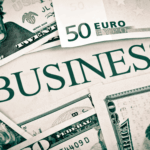Walmart, as a leading retailer, continues to grapple with the effects of tariffs introduced by the Trump administration. These tariffs have notably affected retail pricing strategies, challenging Walmart and its competitors in maintaining profitability while adjusting to rising costs. Tariffs on imported goods are reshaping consumer prices, impacting not only retailers’ strategies but also consumer behavior across income groups. Addressing how companies respond to these fiscal policies offers insights into the broader economic landscape.
In earlier years, Walmart and other prominent retailers were already confronting challenges due to tariffs, which were anticipated to influence their pricing models. Retailers like Target and Home Depot also had taken varied strategic approaches in the past to mitigate the costs, reflecting the diverse impact of tariffs across the industry. These companies have historically been a barometer of consumer spending trends, adapting to external pressures in different ways, signaling the market‘s volatility.
What Is Walmart’s Current Tariff Strategy?
Walmart has been unable to fully absorb the cost implications of tariffs, leading to price increases across its product range, particularly for goods imported from China, Mexico, Vietnam, and India. The company’s financials for the May-July quarter show a significant rise in revenue at $177.4 billion, marking a 4.8 percent increase from the previous year. However, net income figures fell short of Wall Street expectations, highlighting the strain tariffs are placing on profitability.
Why Are Competitors Taking Different Approaches?
Target has been more conservative in rebuffing price increases, opting for price adjustments as a last resort.
“We’ll take price as a last resort,” remarked Target CFO Rick Gomez.
This stance underscores divergent strategies in navigating tariff-related challenges. Meanwhile, Home Depot has reverted from its earlier strategy of not increasing prices, now allowing modest price hikes in select categories due to ongoing tariff costs.
Despite these hurdles, Home Depot’s sales performance has been hindered, leading to a revenue shortfall compared to Wall Street’s expectations, marking the first occurrence since 2014. This deviation highlights the retail sector’s sensitivity to economic shifts influenced by tariff policies. In contrast, Lowe’s effective cost management strategy helped maintain stable financial performance, aligning its imports more heavily toward domestic sources.
“We’re managing this literally in real time because this is uncharted waters,” expressed CEO Marvin Ellison of Lowe’s.
Focusing on domestic sourcing, Lowe’s strategically reduced its dependency on Chinese imports, representing a tactical pivot in its supply chain to mitigate tariff impacts.
Retailers will continue adjusting their pricing in response to the persistent influence of tariffs and consumer price expectations. As tariff policies remain challenging, businesses are evaluating their pricing strategies to maintain market position and profitability. The uneven reactions among major retailers like Walmart, Target, and Home Depot indicate the complexity of retail adaptation amid fiscal constraints, emphasizing the need for dynamic approaches to pricing and sourcing. Customers and investors alike are now attuned to these shifts, expecting transparency and strategic clarity from these large retail operators.









